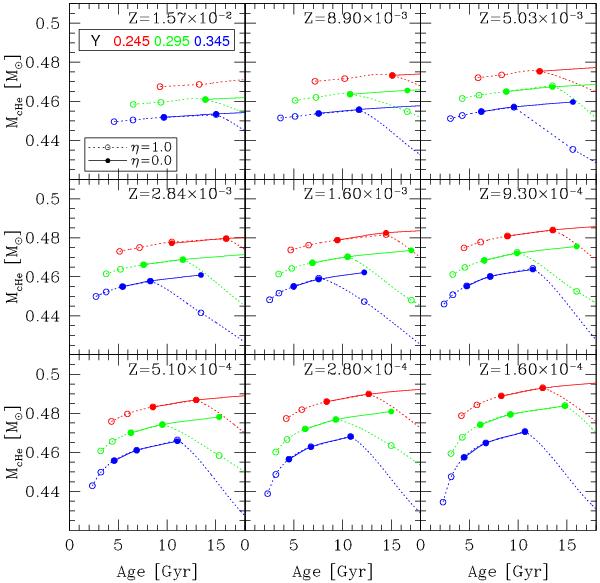Fig. 7

Relation between age at the RGB tip and the He core mass (McHe) reached for stars with different initial masses, metallicities, helium abundances and different mass loss rates (solid lines: no mass loss, or η = 0; dotted line: η = 1.0). Interpolated lines connect the real values for different initial helium abundances Y, from top to bottom: 0.245 (red), 0.295 (green), and 0.345 (blue). For stars with η = 1.0 and η = 0.0, the initial masses go, from left to right, from 1.1 to 0.5 M⊙ and from 0.9 to 0.7 M⊙, respectively, in steps of 0.1 M⊙. As can be seen from the monotonic behavior of the solid lines, the helium core mass increases for higher ages (or lower initial masses). In the case of stars with mass loss (dotted lines), there is a maximum value for McHe because, for the mass loss efficiency assumed (η = 1.0), stars lose a large fraction of their masses at higher ages, which decreases the hydrogen-burning rate and leads to a premature departure from the RGB; a hot flasher may then take place. (See text for further details.)
Current usage metrics show cumulative count of Article Views (full-text article views including HTML views, PDF and ePub downloads, according to the available data) and Abstracts Views on Vision4Press platform.
Data correspond to usage on the plateform after 2015. The current usage metrics is available 48-96 hours after online publication and is updated daily on week days.
Initial download of the metrics may take a while.


